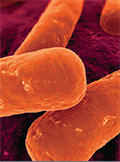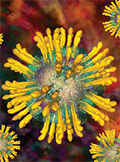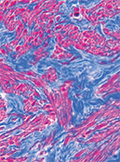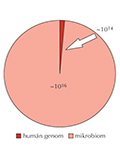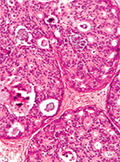The eLitMed.hu medical portal uses computer cookies for convenient operation. Detailed information can be found in the Cookie-policy.
Lege Artis Medicinae - 2014;24(01-02)
Content
[How to detect it? Dementia screening in primary care]
[The early stage of dementia, the diagnostic and clinical importance of prodromal stages of dementia have been increasingly recognised in the past few years. Nowa - days, simple, rapid, easy to use cognitive screening tests are available, such as the recently developed Early Mental Test and the standardised Mini-Mental State Exami - nation, Clock Drawing Test, which could help general practicioners in the recommended regular dementia screening. The aim of this review is to help general practicioners understand the nature and importance of prodromal and manifest stages of dementia syndromes, and to summarise the characteristics, advantages and disadvantages of dementia screening tests that can be used in primary care. In addition, practical hints are also integrated regarding the diagnosis, screening and referral of persons with high risk for dementia.]
[Actualities in the epidemiology, diagnostics and therapy of Clostridium difficile infections - a European outlook]
[Despite of the facts that Clostridium difficile has been accepted as an enteral pathogen since 1978 and during the past years we have learned a lot about its pathogenic toxins and about diagnostic possibilites, this pathogen has not attracted major interest until the early 2000s. The rapid increase of nosocomial diarrhoea caused by some hypervirulent ribotypes of C. difficile in a number of countries, followed by the increased number of community-acquired cases and the appearance of new risk factors besides antibiotic-related diarrhoeas have put C. difficile infections (CDI) in the focus of research. The rapid and correct diagnosis of the hospital or community acquired diarrhoeas enables clinicians to discontinue - if possible - the usage of the antibiotic therapy responsible for the symptoms, to start treatment early and introduce hospital hygiene measures as soon as possible. The aim of this article is similar to that of the “CDI Europe Report”, an initiative led by European experts: to draw attention on the importance of C. difficile infections in Hungary and in Europe by summarising the latest epidemiological data, the recommended diagnostic algorithm, therapeutic options and the importance of local and national surveillance and infection control measures in hospitals. Clostri]
[Treatment of hungarian chronic hepatitis C genotype 1 patients with severe fibrosis or compensated cirrhosis in the international telaprevir Early Access Program: Interim analysis of the week 16 results]
[The approval of the first two direct acting antiviral agents, boceprevir and telaprevir, has been a major step forward in the treatment of chronic hepatitis C. Both protease inhibitors must be added to the dual peginterferon and ribavirin combination therapy. The triple combination therapy resulted in significantly higher rates of recovery both in naive patients and in those previously unresponsive to therapy. Following the approval of telaprevir, an Early Access Program has been initiated in 16 countries. In Hungary 132 patients were enrolled into this program. In the first interim analysis, data from the first 16 weeks of treatment of 92 patients are included. Liver cirrhosis (F4) was detected in 70% of the patients and severe fibrosis (F3) was found in the other 30%, on the basis of either liver biopsy or transient elastography. During their previous antiviral treatment, 64% of the patients were non-responders (partial and nullresponders), 26% were relapsers, and only 10% were treatment naives. The efficacy of the triple combination was excellent, as 82% of the patients had undetectable HCV RNA at week 12. Further - more, 48% had negative HCV RNA at week 4 as well as at week 12. Cessation of i.e. negative HCV RNA at week 4 through week 12. Only 5.4% of the patients had virologic failure and needed to stop therapy prematurely. The most frequent adverse event was anemia, hemoglobin level decreased below 100 g/l in 40% of the patients. In the majority of these patients ribavirin dose reduction was sufficient to treat anemia, only 16% needed blood transfusion. The rate of severe rash was 6%. Although this group of patients represents a difficult-to-treat population, both efficacy and safety data are similar to published data in international clinical trials. A very effective, triple combination therapy with telaprevir, peginterferon and ribavirin can be provided for patients with advanced liver disease, to reduce the risk of liver failure and hepatocellular carcinoma.]
[Public health prevention in Hungary II.: established methods, adequate information, real screening results „Comprehensive Health Screening of Hungary 2010-2020” - four-year results]
[In the past 10 years, a number of screening programs with various goals have been started in Hungary, with varying degrees of success. The „Comprehensive Health Screening of Hungary 2010-2020” program has been touring the country (with a screening truck), either joining organised events or as an independent screening, collaborating with local healthcare centers (primary care, occupational healthcare etc). The screening program has been conducted in a special truck, in which various examinations were performed in a set time. Those who participated in the screening received a prevention information pack (for studying and reading at home) and the official publication of the program (Health Book), in which the program and the screening results were described. In the past four years the screening truck has been to 725 places in Hungary and travelled 83,145 kilometers. 87,935 people have participated in comprehensive screening. 194,549 visitors received lifestyle counseling and 142,319 received Prevention Packs. In total 2,901,855 examinations have been performed, which required 6711 hours of work of 1132 healthcare professionals. 5,856,114 answers were given to queries of the survey related to the health status of the Hungarian population. The program has already overfulfiled its original goals to visit 1500 locations and perform 8 million examination during this period. It is of particular significance that the average age of participants was 40 years. As cardiovascular risk is still the leading health risk, screening for such risk factors has to be part of all general and complex screening programs. In this program, an increasing number of validated, rapid and effective risk-estimation tests were used. It is remarkable that 20% of the tests related to colorectal cancer risk has positive results. Also of importance are the test results for hearing loss (7% positive) and various degrees of visual impairment (over 50%). Both results have significant social and economical implications for both individuals and the society. Unfortunately, the general level of health consciousness is still low. This might be improved not only by the screening itself but the opportunity to inform the public and provide organised counselling and printed materials, for which the activity and expertise of professional healthcare worker is essential. ]
[Our body as an ecosystem, or the „brave new world” of metagenomics]
[Micro-organisms (e.g. bacteria) are generally associated with diseases. We rarely consider that these organisms are living creatures, which pursue to survive and reproduce themselves. Obviously, they are dependent on and also have an active impact on their living environment. This interaction might be beneficial but also harmful - a situation they try to avoid. This complex network represents an extremely complicated multi-directional control, the disruption of which may result in serious diseases.]
[The health prevention role of the forest]
[The government attaches great importance to the health conservation and protection role of the forest. National forestry manages the vast majority of the forest parks in the country, without their effort these popular places have been destroyed a long time ago. Forest parks attract crowds of people, jut in suburban forests of the capital city ten million people visit in each year. Beside the introduction of their purpose and function in health prevention, authors aimed to summary the consequences of doing sport in the nature, especially in the forest. The fact confirmed by medicine that 20-30 minutes long exercising multiplies cardiac function and cause at least a bit difficulty in breathing, improve the physical fitness in healthy people. The same is true for walking and hiking as well. It is well known that fresh air, sunshine, exercise in diverse environment have favorable effects on physical and mental conditions physically active lifestyle is an important factor in health.]
1.
Clinical Neuroscience
[Headache registry in Szeged: Experiences regarding to migraine patients]2.
Clinical Neuroscience
[The new target population of stroke awareness campaign: Kindergarten students ]3.
Clinical Neuroscience
Is there any difference in mortality rates of atrial fibrillation detected before or after ischemic stroke?4.
Clinical Neuroscience
Factors influencing the level of stigma in Parkinson’s disease in western Turkey5.
Clinical Neuroscience
[The effects of demographic and clinical factors on the severity of poststroke aphasia]1.
2.
Clinical Oncology
[Pancreatic cancer: ESMO Clinical Practice Guideline for diagnosis, treatment and follow-up]3.
Clinical Oncology
[Pharmacovigilance landscape – Lessons from the past and opportunities for future]4.
5.





